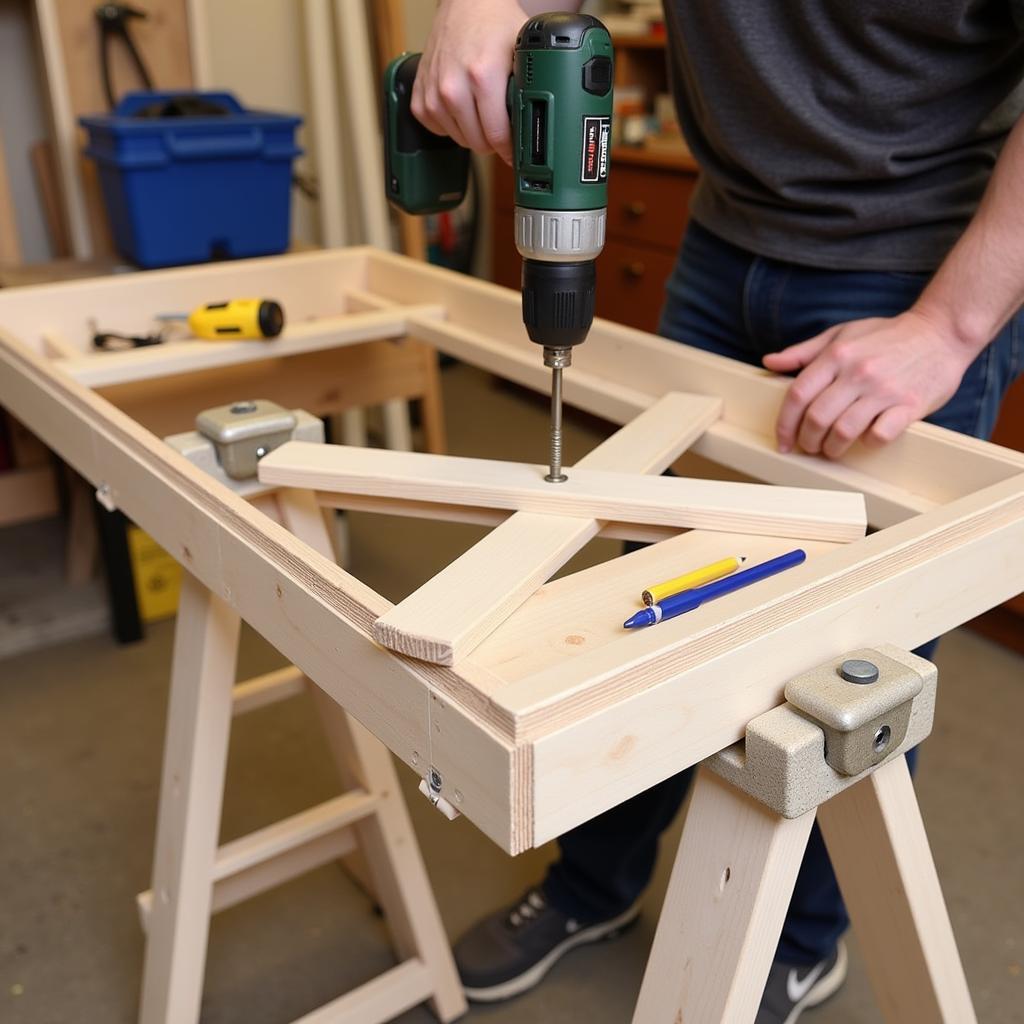How to Make Car Service Ramps: A DIY Guide
Creating your own car service ramps might seem like a daunting task, but with the right instructions and a little effort, it’s an achievable project for any DIY enthusiast. Whether you’re a seasoned mechanic or a car enthusiast looking to save some money on basic maintenance, building your own ramps can be a rewarding experience.
Planning Your DIY Car Ramps
Before you rush to the hardware store, careful planning is crucial for success. This includes determining the right dimensions, choosing suitable materials, and gathering the necessary tools.
Choosing the Right Materials
The material you choose for your car ramps directly impacts their strength, durability, and cost. Here are a few popular options:
- Wood: An affordable and easy-to-work-with material, making it ideal for beginners. Choose pressure-treated lumber for enhanced moisture resistance.
- Metal: Steel or aluminum offer superior strength and longevity but come with a higher price tag. Working with metal might also require specialized tools.
Determining the Right Dimensions
The dimensions of your car service ramps depend on your vehicle’s ground clearance and the type of maintenance you plan to do.
- Height: Aim for a ramp height that provides comfortable clearance underneath your vehicle, typically between 6-8 inches.
- Width: A ramp width of 12-16 inches per ramp offers sufficient tire support for most vehicles.
- Length: The ramp length determines the incline angle. For safety, aim for a gentle slope, ideally with a length of 4-6 feet.
Gathering the Necessary Tools
Having the right tools on hand makes the building process smoother:
- Measuring tape
- Saw (circular saw or hand saw for wood, angle grinder for metal)
- Drill and drill bits
- Screwdriver or impact driver
- Level
- Safety glasses and work gloves
Building Your Car Service Ramps: A Step-by-Step Guide
Once you’ve gathered your materials and tools, it’s time to start building:
- Cut the Ramp Components:
- Using your measurements, cut the ramp boards (for wood) or metal sheets to the desired length.
- For each ramp, you’ll need two identical ramp boards, two support boards for the sides, and several cross braces for added stability.
- Assemble the Ramp Frames:
- Lay the two ramp boards parallel to each other, ensuring the distance between them equals your desired ramp width.
- Attach the side support boards to the ramp boards using screws or bolts, creating a sturdy frame.
- Install Cross Braces:
- Cut the cross braces to fit snugly between the side supports.
- Attach the cross braces at regular intervals along the ramp frame, enhancing stability and preventing sagging.
- Add a Stop Block (Optional):
- For added safety, consider attaching a stop block at the end of each ramp. This prevents your vehicle from accidentally rolling off the ramps.
- Sand and Finish (Wood Ramps Only):
- Sand down any rough edges and apply a coat of paint or sealant to protect the wood from moisture and wear.
 Building DIY Car Service Ramps
Building DIY Car Service Ramps
Using Your Car Ramps Safely
While DIY car ramps can be a great asset, safety should always be your top priority:
- Choose a Level Surface: Always place your ramps on a flat, level surface to prevent them from tipping or sliding.
- Engage Parking Brake: Before driving onto the ramps, firmly engage your parking brake to secure your vehicle.
- Drive Up Slowly and Carefully: Approach the ramps slowly and in a straight line, avoiding any sudden movements.
- Chock the Rear Wheels: Once your vehicle is securely on the ramps, place wheel chocks behind the rear wheels for added safety.
- Inspect Regularly: Over time, check your ramps for any signs of wear and tear. Replace any damaged components immediately.
 Safely Using DIY Car Ramps
Safely Using DIY Car Ramps
Conclusion
Building your own car service ramps can be a practical and rewarding DIY project, saving you money and providing a sense of accomplishment. By following these steps and prioritizing safety, you can create a reliable set of ramps that will serve you well for years to come. Remember to always work carefully and double-check your measurements for optimal results.
FAQs
Can I use concrete blocks instead of building ramps?
While concrete blocks might seem like a quick solution, they are not recommended. They lack the stability and safety features of properly constructed ramps and can damage your vehicle’s undercarriage.
What is the ideal slope for car service ramps?
Aim for a gentle slope with an angle no steeper than 30 degrees. A shallower angle provides a safer and more controlled incline for your vehicle.
Can I use these ramps for oil changes?
Yes, DIY car service ramps are suitable for basic maintenance tasks like oil changes, provided they offer sufficient clearance for your vehicle.
Need help with your car repairs? Contact us on WhatsApp: +1(641)206-8880, Email: [email protected]. Our team is available 24/7 to assist you.

